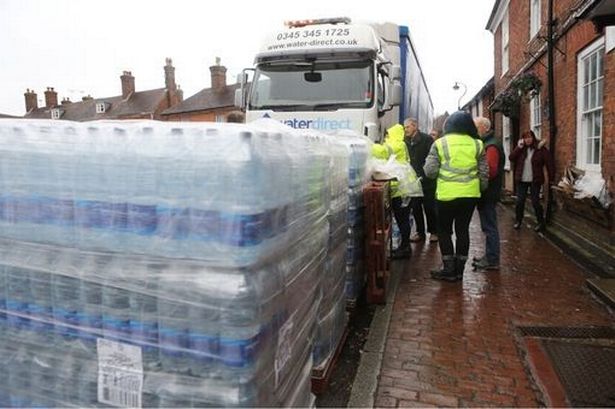
England: Water shortages causing wildlife damage inevitable if major pipe replacement not done, says Environment Agency.
People need to use less water and companies must curb leaks to prevent future water shortages and damage to rivers and wildlife, the Environment Agency has warned.
Many sources of water supplies are already overstretched and, with climate change and a growing population, much of England could see significant supply shortages by the 2050s – particularly in the South East.
In England, almost 9,500 billion litres of freshwater were abstracted in 2016, which is enough to cover the whole of Greater London in nearly 6m (20ft) of water – reaching to the eaves of a two storey house, the EA said.
Around 55% of water taken from freshwater sources was by utilities to provide public supplies, a report from the Environment Agency (EA) said.
But three billion litres a day are lost through leaks from pipes, which is about a fifth of the water put into the system, and is equivalent to the amount of water used by more than 20 million people in an average day.
Large amounts of water are also wasted by households, where average use is 140 litres per person a day, so in total a third of water taken from the natural environment is wasted through leaks, treatment losses, and in the home.
The amount of water taken out of the environment for households, industry and agriculture was already unsustainable for more than a quarter (28%) of groundwater resources in 2017, and almost a fifth (18%) of surface water such as rivers have also seen unsustainable levels of abstraction.
That meant that somewhere between 6% and 15% of rivers were not in a good environmental condition, with more than three-quarters of chalk streams – a unique and globally important habitat – not in a good condition.
Taking too much water out of the environment can harm wildlife such as fish, birds and aquatic plants, and damage wetlands which are important habitats for a host of animals and plants.
And in the future, with climate change, river flows are predicted to increase in the winter and decrease in the summer, which along with drier conditions because of warmer temperatures could have a greater effect on wildlife.
More stagnant water during droughts and higher temperatures could also lead to the spread of mosquito borne diseases such as dengue fever and West Nile virus, the report warned.
Droughts could also cause waterborne diseases, breathing problems from increased dust, stress and anxiety.
England’s population is growing, and is set to rise to 58.5 million by 2026, putting even more stress on water supplies.
If no action is taken to reduce demand and increase supplies of water, most areas will not be able to meet demand if climate change is severe and population growth is high, the report said.
Even with low growth and less severe changes to the climate, there will be significant water supply deficits by the 2050s, particularly in the South East.
Emma Howard Boyd, chairwoman of the Environment Agency, said: “We need to change our attitudes to water use. It is the most fundamental thing needed to ensure a healthy environment but we are taking too much of it and have to work together to manage this precious resource.
“Industry must innovate and change behaviours in order to reduce demand and cut down on wastage – and we all have a duty to use water more wisely at home.
“With demand on the rise, water companies must invest more in infrastructure to address leakage instead of relying on abstraction and the natural environment to make up this shortfall.”
The report also warned that energy generation is a major user of water.
In the future, more nuclear or renewables could reduce the use of water, but if gas or other fossil fuel power plants are used with technology to capture their carbon emissions and store it underground, that could lead to increased water use.
And while there is not likely to be significant abstraction of water to use in fracking for shale gas in England, there could be local impacts in areas that are already water stressed if the industry develops, the report said.













